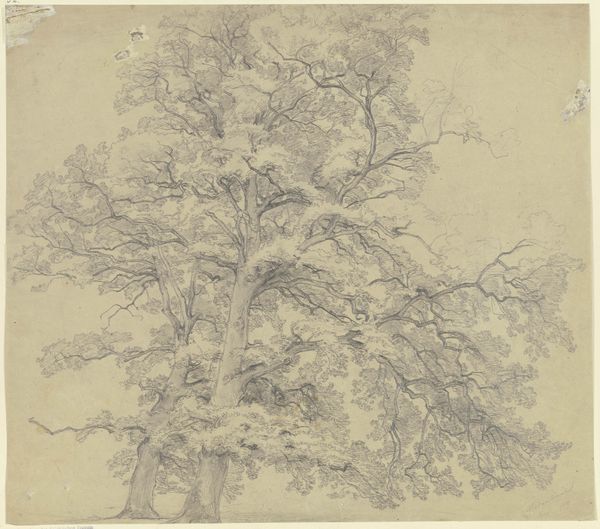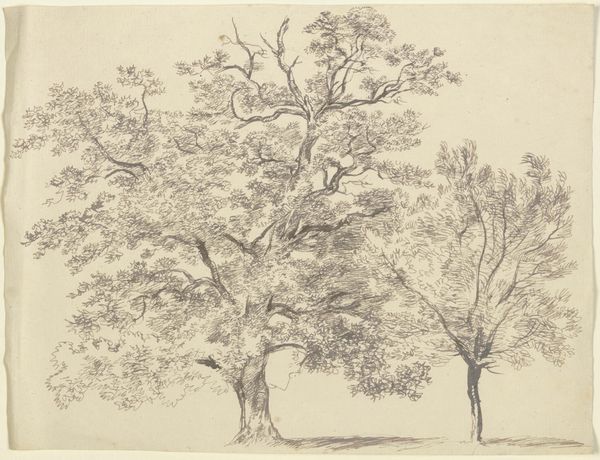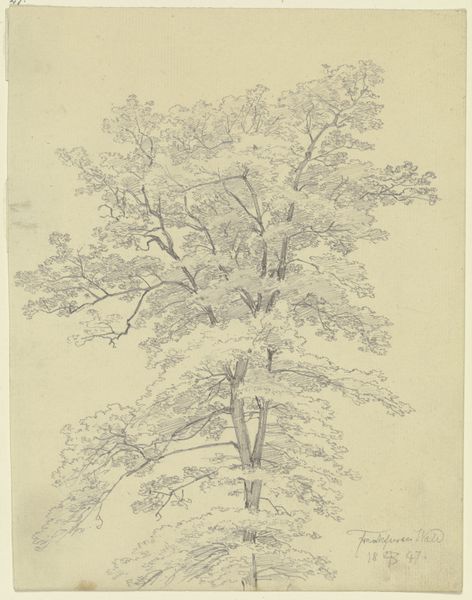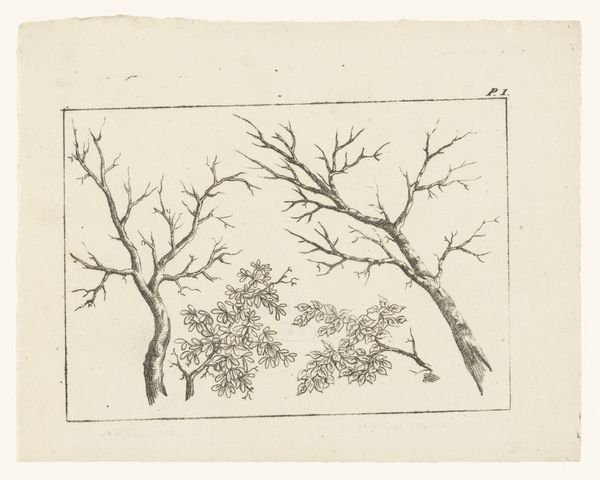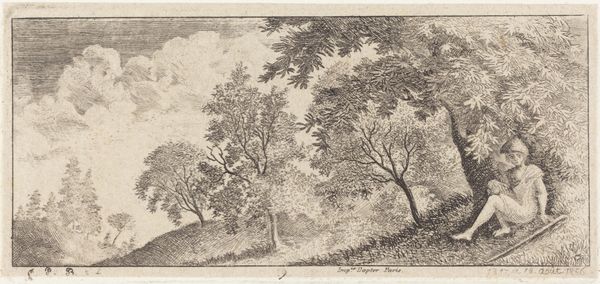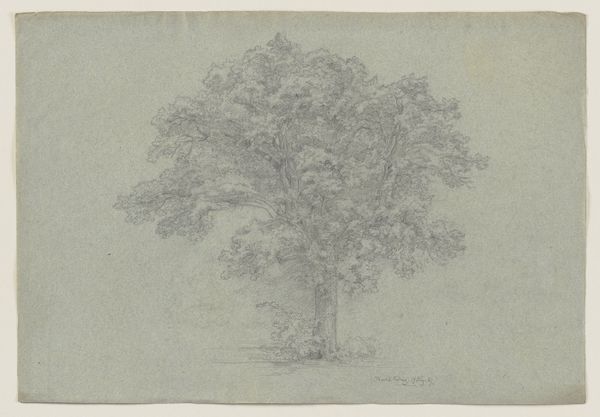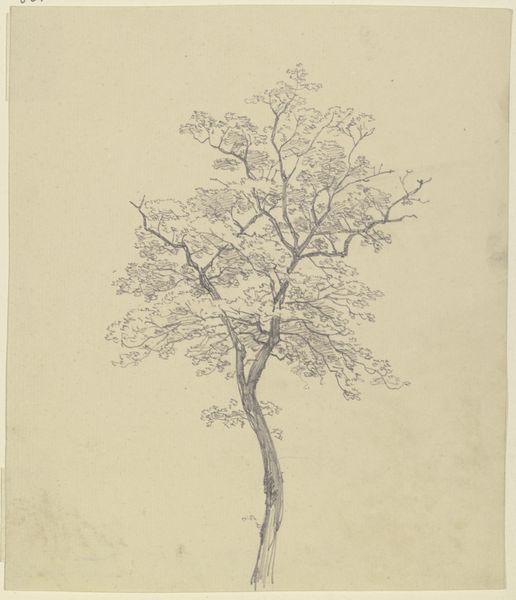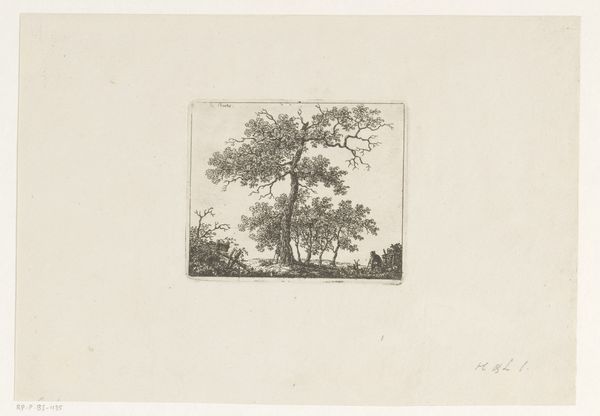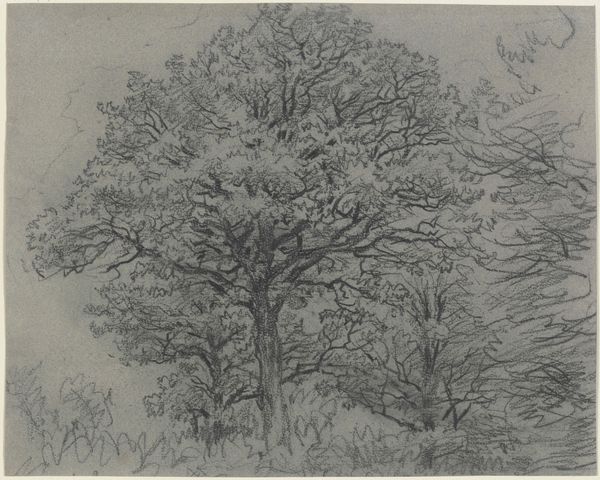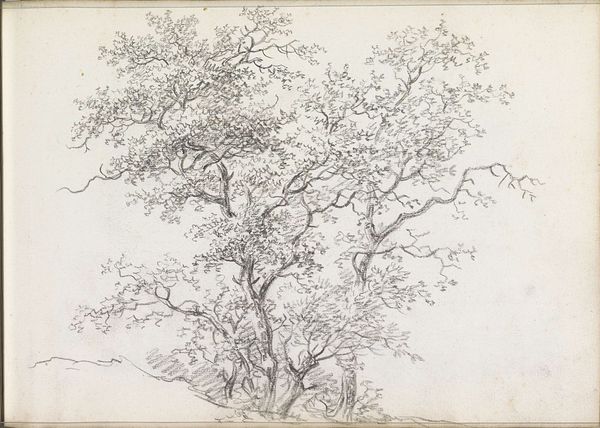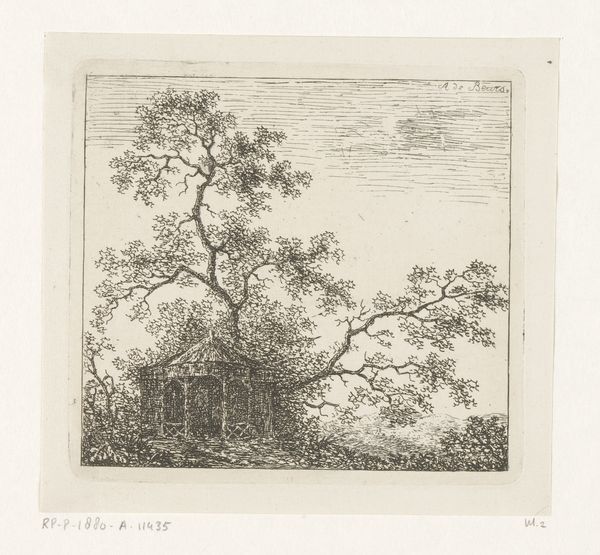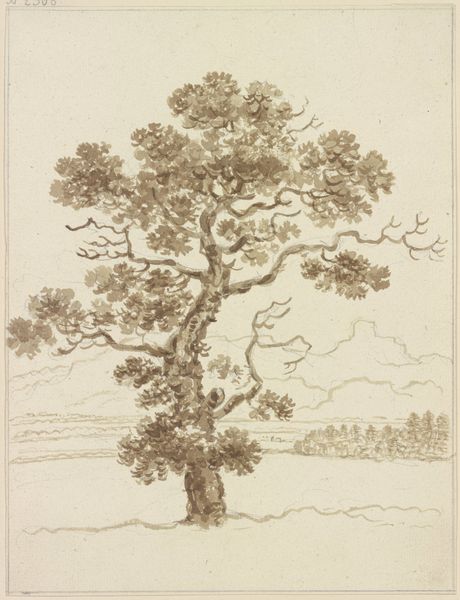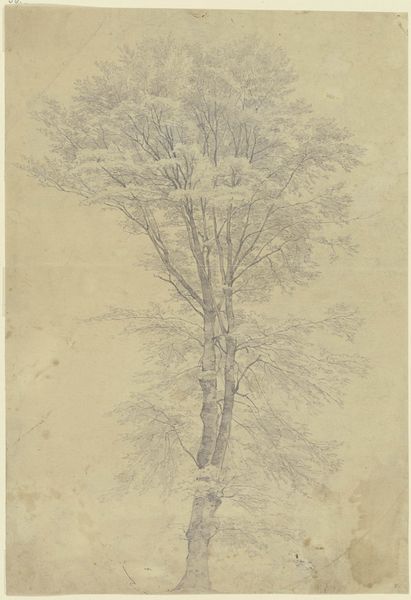
drawing, print, etching
#
drawing
# print
#
etching
#
landscape
Dimensions: height 200 mm, width 328 mm
Copyright: Rijks Museum: Open Domain
Curator: I see a quiet drama, almost a somber stillness. There's a loneliness to this tree's crown filling the frame. Editor: You're drawn to the solitude; that’s interesting. We’re looking at "Kruin van een boom," or "Crown of a Tree," a work from 1858-1859 by Sir Francis Seymour Haden, currently residing here at the Rijksmuseum. He employed etching techniques to create it. And you pick up on solitude? Curator: Absolutely. It’s the muted palette, the spidery branches reaching out like desperate fingers against a nothingness… It evokes a sense of reaching for something intangible. Was Haden feeling lost in those years, maybe? Editor: Haden was more than just an artist; he was also a surgeon. This was a time when industrialization was changing the landscape rapidly. The art world debated Realism. His etching practice, distinct from his profession, let him comment on society, class, nature's vulnerability. It was a pointed, political, aesthetic choice to focus on landscapes. Curator: So the tree, in that sense, stands in for… what? Resistance? Resilience? It isn't idealized, that’s for sure. Editor: Perhaps. It occupies a space where those readings converge. There is strength suggested in those aged boughs but also a melancholy in those branches, as you say, against the empty space that speaks to larger societal anxieties regarding loss, natural resources, a colonialist past… Curator: You've given me a whole new appreciation for Haden. Now I see it - the loneliness becomes a rallying cry for recognizing what’s at stake. Editor: I agree. Haden’s landscape work urges us to critically examine not just aesthetic but material impacts, inviting us to engage deeply with his world… and, by extension, our own.
Comments
No comments
Be the first to comment and join the conversation on the ultimate creative platform.
